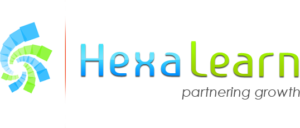What Is A Flipped Classroom?
The interaction between teachers and students is highly valuable in learning, and teachers play one of the most vital roles in the learning process. With the rise of technology, educational experts started thinking about how to maximize the benefits of student-teacher interactions with the help of technology.
They argued a teacher simply delivering a lecture in a live classroom is equivalent to students listening to a recorded video lecture unless there is an interaction between the teacher and the student. In most classes, at least 80% of the time is spent just listening to the lecture without any interaction. This greatly reduces the effectiveness of learning outcomes.
Here comes the concept of the flipped classroom. It was first brought up by two primary teachers, Jonathan Bergmann and Aaron Sams. They thought if the purely lecture part can be taken out from the live classroom, then the entire classroom session can be utilized for student-teacher interaction. Students can go through recorded video lectures from home and come to the classroom prepared with their queries and doubts which the teacher can address.
This model became popularly called a flipped classroom. This is essentially a blended model, where the core content is delivered to the students in eLearning form, such as videos, web-based content, etc., and the face-to-face sessions are utilized for interaction rather than content delivery.
The components of the flipped classroom include:
- Study at home
- Watch a recorded lecture
- Study online reading material
- Read books or digitized texts
- Participate in an online discussion
- Do own research on content
- Study in the classroom
The practice of skills:
- Query discussion with peers and teacher
- Participate in debates
- Make presentations
- Participate in station learning
- Do lab experiments/ground research
- Do peer review or group activities
The 4 Pillars Of FLIP Learning
The success of the flipped classroom methodology depends on 4 pillars:
- Flexible environment
It allows various formats of instruction and content delivery. Teachers can decide on online and offline modes depending on the complexity of the subject and the needs of the students. Students get the option to prepare better for the classroom sessions. - Learning culture
Flipped classroom shifts the teacher-centric model to the student-centric model where greater responsibility is bestowed on the students and they are encouraged to participate and interact. This fosters a learning culture. - Intentional content
The flipped classroom is not a fixed model. It keeps improving with each interaction and educators can decide which content is having a greater impact and which needs improvement. It allows educators to try and improve the content. - Professional educator
The role of an educator in a flipped classroom is much more complex and demanding than a traditional classroom where they used to deliver a lecture only. Here they need to think of offline and online content, interactions, delivery mechanisms, and overall control of the learning curve.
Benefits Of The Flipped Classroom
The flipped classroom, wherever implemented, has shown various benefits over the traditional classroom. Some of these are:
- Better time management
With the maximum load of content going offline, teachers get more time to interact with students, understand their problems, and guide them better. - Utilization of students' time
When students go through the content outside of class hours, their time is better utilized, which otherwise might have been wasted. - Improvement in content
Since the content is absorbed outside the classroom and there is more interaction between the teacher and student, the teacher gets to evaluate the effectiveness of the content better and modify the content based on the student’s queries and doubts. Thus, the content keeps improving, which is otherwise not possible. - Better skill management
The primary skill of a human teacher is not just delivering the content, but to understand the student and guide them. The flipped classroom allows teachers to utilize their skills fully.
Criticism Of Flipped Classroom
The success of flipped classrooms depends greatly on how the teacher manages the offline and online content and how they ensure the students are actually going through the content. If designed poorly, the content divide can adversely impact the learning and students can get frustrated.
Conclusion
The flipped classroom is an emerging pedagogical concept that has shown impressive benefits over the traditional classroom. A carefully designed flipped classroom model can greatly improve the learning outcome and contribute to the overall development of the students.










